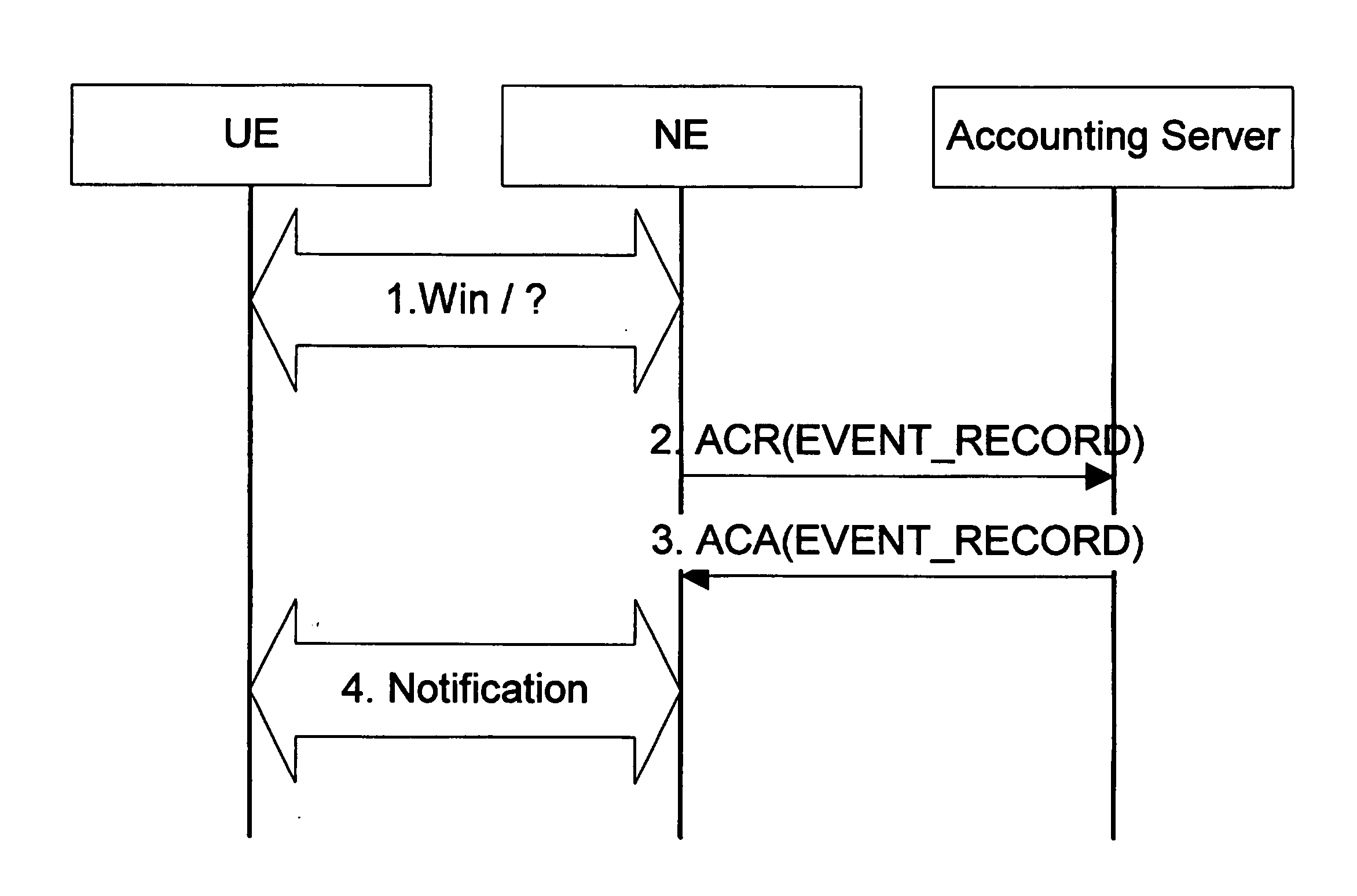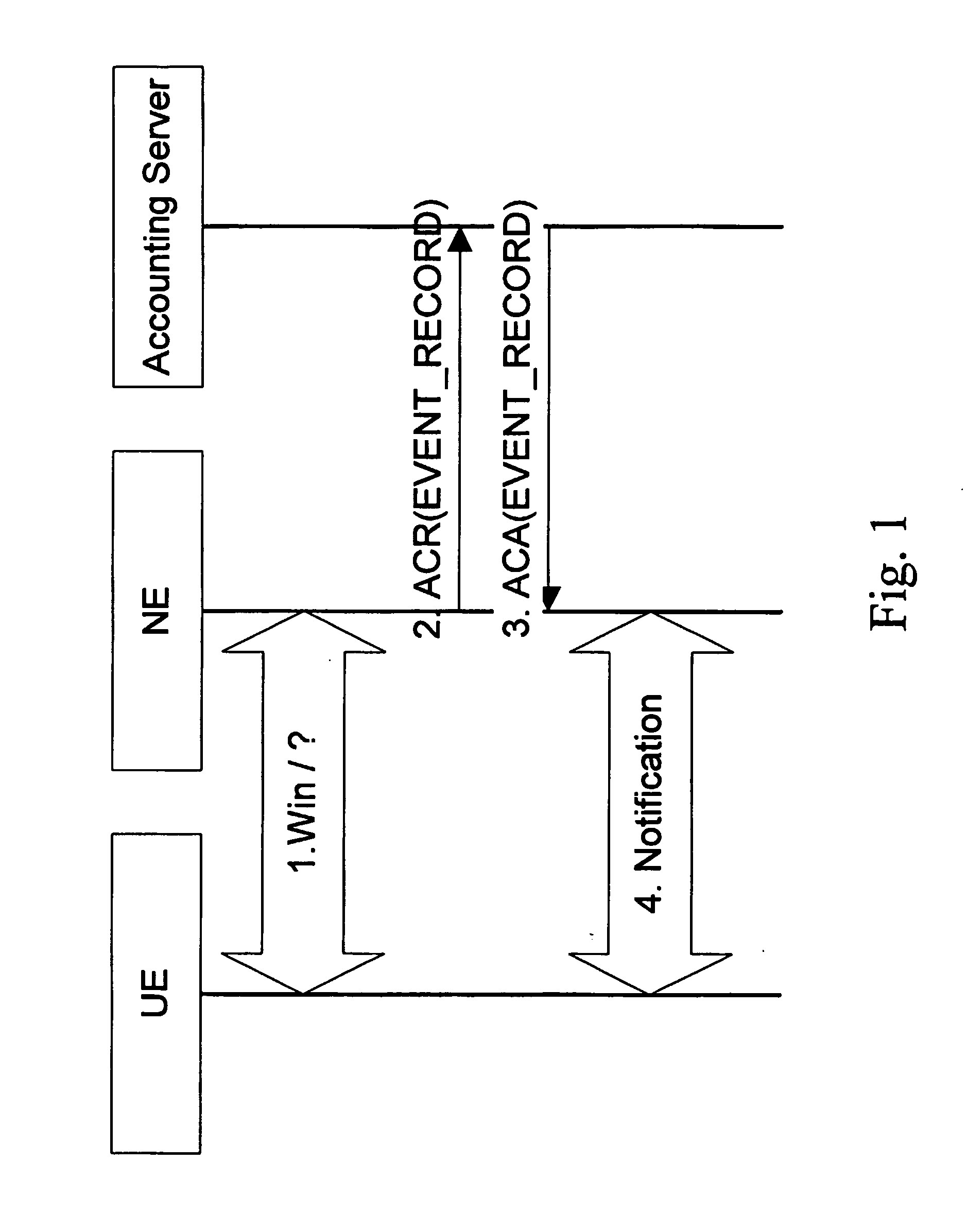Method for depositing a credit on an account associated to a terminal subscribed to a communication network
- Summary
- Abstract
- Description
- Claims
- Application Information
AI Technical Summary
Benefits of technology
Problems solved by technology
Method used
Image
Examples
Embodiment Construction
[0027] According to the present invention, in order to enable the deposit of an amount of money, or generally a credit of units (which need not necessarily correspond to money) to an account associated to the terminal through an interface between a network element NE and an Account Server, a new mechanism is introduced. The new mechanism relies for example on the DIAMETER protocol. It involves in that case a new DIAMETER request including an indication that the request is a deposit / credit to the account and also a new Attribute Value Pair AVP indicating the source of the deposit / credit. The answer message indicates to the network element whether the request was successful or not. It has to be noted that ACR as such is not a new request, this is just a new “mechanism” in connection with which also the amount of the deposit must be indicated as well as the identity of the subscriber.
[0028] As regards the DIAMETER protocol on which the present invention for example relies, Diameter is...
PUM
 Login to View More
Login to View More Abstract
Description
Claims
Application Information
 Login to View More
Login to View More - R&D
- Intellectual Property
- Life Sciences
- Materials
- Tech Scout
- Unparalleled Data Quality
- Higher Quality Content
- 60% Fewer Hallucinations
Browse by: Latest US Patents, China's latest patents, Technical Efficacy Thesaurus, Application Domain, Technology Topic, Popular Technical Reports.
© 2025 PatSnap. All rights reserved.Legal|Privacy policy|Modern Slavery Act Transparency Statement|Sitemap|About US| Contact US: help@patsnap.com


